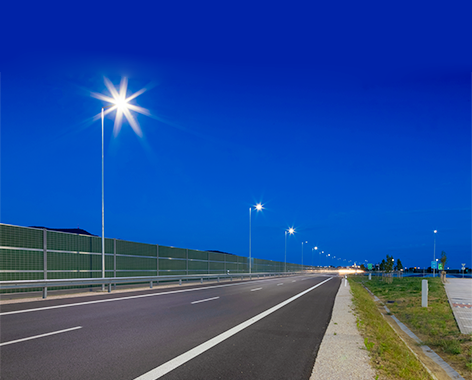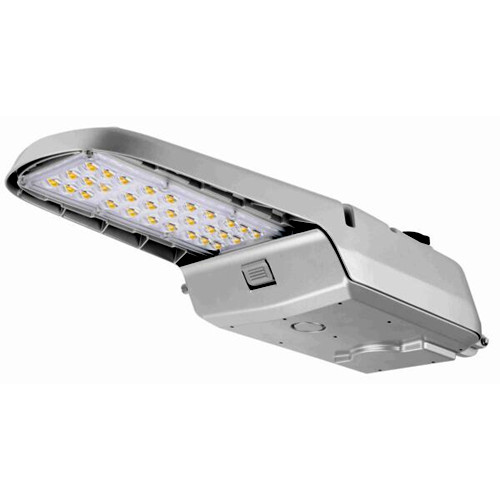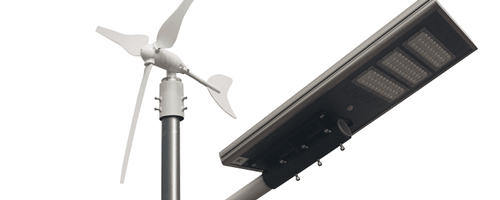LED street lights have become a game-changer in urban lighting upgrades, offering remarkable technical advantages. Their efficient performance, innovative features, and adaptability to various conditions make them a vital component of modern urban lighting systems. In this overview, we will delve into the main technical indicators, standards, and capabilities of LED street lights, comparing them to traditional lighting sources and exploring the exciting realm of wind and solar complementary LED street lights.

As LED lighting technology continues to mature, high-power LED light sources now achieve a luminous efficacy of more than 100 lm/W, with standard-power LEDs reaching around 95% efficiency. These advancements make LED street lights, particularly high-power LED street lights, a crucial component of energy-efficient urban street lighting upgrades. These high-power LED street lights, with power levels exceeding 30W, employ cutting-edge LED semiconductor light sources. They offer immense promise in modern urban lighting, featuring deep dimming capabilities and maintaining consistent color quality even when dimmed. This disruptive technology is rapidly transforming the conventional street lighting market.
① The light conversion rate should be at least 17%, which means that for every square meter of solar energy at 1000W, the actual utilization efficiency should be 170W.
② The prevalent street light lens material in the market is an enhanced optical material with a transmittance of at least 98% and the ability to withstand temperatures ranging from -38°C to +90°C.
③ LED street light lenses are primarily employed to create a rectangular light spot. These lenses are typically made of PMMA optical material with a light transmittance of at least 93%. They should be able to withstand temperatures from -38°C to +90°C, and their UV yellowing rate should remain consistent over 50,000 hours of operation.
④ The average illuminance for uniform road surface lighting should be 0.48, and the spot ratio should be 1:2.
⑤ LED street lights should conform to road illumination standards, with at least half of the central light achieving 25 LX, one-quarter of the central light reaching 15 LX, the minimum light intensity at 16 meters away being 4 LX, and the overlapping light intensity measuring around 6 LX.
⑥ These lights should have promising applications in new urban lighting, offering dimming capabilities without compromising color quality and other valuable features.
⑦ They should be able to adapt to humidity levels of less than 95%.
⑧ A quality guarantee of 5 years should be provided.

The current technical performance comparison between LED street light sources and other light sources is shown in Table 7-15.
|
Table 7-15 Comparison of technical performance between current LED street light sources and other light sources |
|||
|
Describe |
LED grid street light |
Metal halide lamp grid street light |
Nadeng grid street light |
|
Provide electricity |
Grid AC100~240V |
Grid AC220V |
Grid AC220V |
|
Light source |
LED light |
Metal halide lamp (energy-saving lamp) |
HPS |
|
Power |
96W (energy saving>80%) |
500W (energy saving>30%) |
500W |
|
Fever |
Cold light |
medium |
Severe fever |
|
Color temperature (CCT)/K |
3000~10000 |
4000~8000 |
2700~5000 |
|
Light source illumination attenuation |
less than 10% |
greater than 30% |
greater than 40% |
|
Light source life |
40000H |
5000h |
3000H |
|
Reactive power loss |
Extremely small |
have |
have |
|
Vertical ground street light center illumination |
22lx or above |
22lx or above |
22lx or above |
|
Illumination uniformity |
0.43, excellent |
>0.35, good |
>0.40, excellent |
|
Irradiation range (uniformity) |
Radius 12m or more |
Radius more than 12m |
Radius more than 12m |
|
Glare Limit |
Cut-off type, maximum light intensity |
Cutoff light, maximum light intensity |
Cut-off type, maximum light intensity |
|
Penetrating |
Excellent fog penetration |
Very poor fog penetration |
Poor fog penetration |
|
High voltage ballasts and other accessories |
None, not afraid of destruction |
Yes, the bottom of the lamp pole is afraid of damage |
Yes, the bottom of the lamp pole is afraid of damage |
|
Environmental protection |
No flicker, cold light source |
Fever, easy yellowing of the casing. |
Fever, easy yellowing of the casing. |
|
Fire-proof level |
94V-0 |
94V-0 |
94V-0 |
|
Lamp housing reflector |
No need (cost saving) |
Need |
Need |
|
Install |
convenient |
||
The dimming method for the LED street light drive circuit involves using a battery pack as its power source, making it a DC/DC converter. In this context, the LED street light's constant current drive circuit typically adopts a switching DC/DC circuit topology, with a variety of driver ICs available for selection. LED street lights are commonly dimmed using Pulse Width Modulation (PWM). The PWM signal can be generated by a microcontroller or produced by a dedicated PWM signal generator.

With the use of LED street lights within a wind-solar hybrid power generation system, the battery output can be inverted from DC to AC without the need for an additional inverter. The infrastructure for wind and solar power generation, including the pole structure, and the LED street light poles are independent of each other but can share a common base, as illustrated in Figure 7-45.
Figure 7-45: A real-life depiction of a wind and solar complementary road lighting system.

Wind-solar complementary LED street lights are particularly well-suited for urban areas or locations where laying cables is impractical, where a limited number of lamps are needed, or in areas with constrained power supply situations.
As we navigate the ever-evolving landscape of urban lighting, LED street lights stand at the forefront of innovation and sustainability. With their impressive technical performance, adherence to rigorous standards, and the potential for complementing renewable energy sources, these lights illuminate the path toward a brighter and more efficient urban future. LED street lights are not just illuminating our streets; they are paving the way for a greener and more sustainable world.
Contact: Mr. Otis
Phone: +8615815758133
Tel: +8615815758133
Email: Hello@lederlighting.com
Add: No. 1 Gaoxin West Road,High-tech Zone, Jiangmen, Guangdong, China